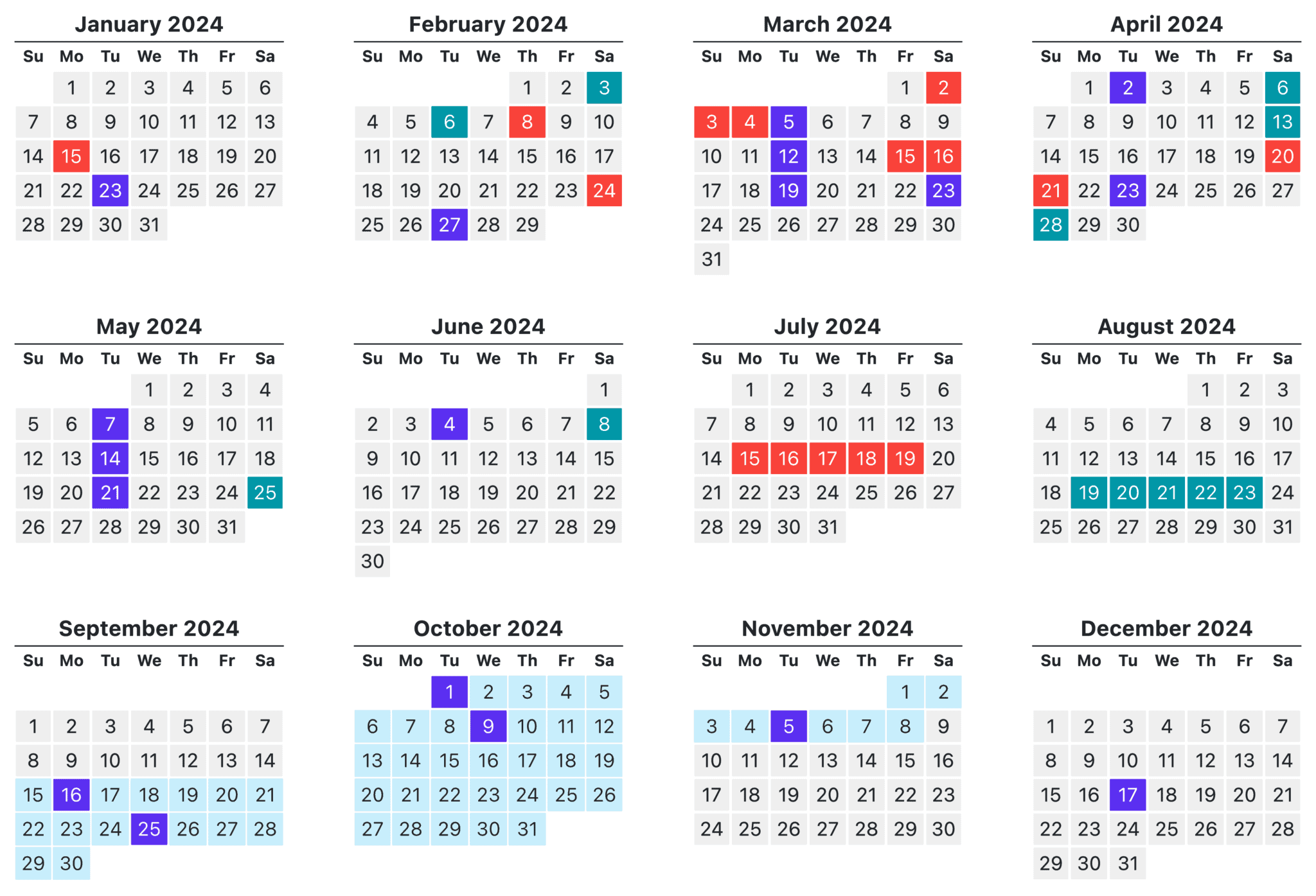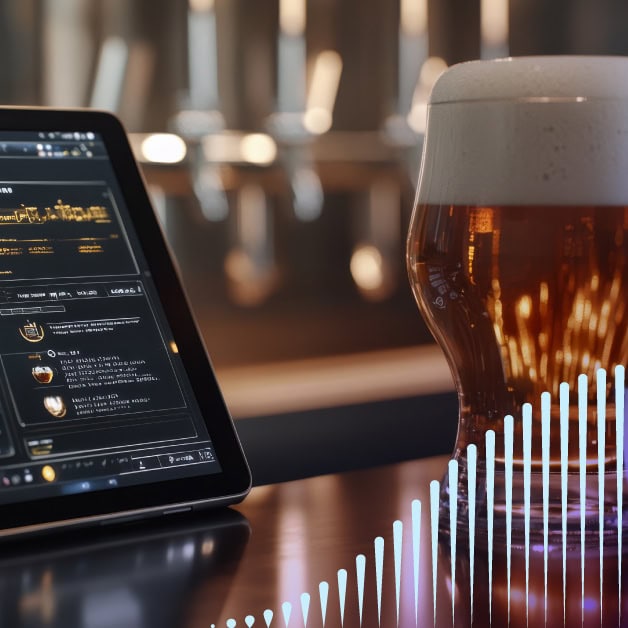It’s no secret that 2024 is an election year.
And no matter how you feel about the upcoming primaries, presidential debates, and election — there’s one thing that all marketers need to keep top of mind: the impact on their campaigns.
During election years, consumers are distracted and there’s more competition for their attention.
Here’s everything you need to know about marketing during an election to ensure your campaigns don’t get caught in the crossfire.
High-level takeaways for marketing during an election
CTV, TV, radio, and billboards/out-of-home (OOH) will be impacted most by political campaigns, but typically only in battleground states and during the height of campaigning, which runs from late September through election day. Paid search, DOOH, and streaming audio will see some impact as well.
Marketers should plan for a 15-50% increase in CPMs for CTV, as well as CPMs and CPC for paid social, during the core six weeks of the election and throughout the year in key battleground states. Higher CPMs mean you might require more budget to hit the same results as you did in 2023. Plan your budgets and forecast results accordingly.
Use the calendar below to understand the key Presidential Election dates in 2024:
 Red = Republican Caucus/Primary
Red = Republican Caucus/Primary
Blue = Democratic Caucus/Primary
Purple = Both Caucus/Primary
Yellow = Election Heat
Local marketing channel-by-channel impact
Social media
When marketing during an election, it is typically a best practice for marketers to go dark on social around an election to avoid the political nature of elections, unless they’re encouraging people to vote and framing it as a civic responsibility without political preference.
Brands can have fun promoting voting, promising a free perk to voters who wear an “I voted” sticker. Avoid taking political stances unless your brand’s identity aligns with a particular viewpoint. Instead, focus on values that resonate across the political spectrum.
Organic social
Serve as a reprieve for consumers by posting more local, non-election content. Organic posts can be a breath of fresh air compared to the bombardment of political ads during the height of the election.
- Double down on local events or happenings.
- Share content around stress management to become a reprieve for stressed voters.
- Keep 80% of the content informative, entertaining, or educational.
- Avoid product or service promotions around the election date since they could be surrounded by a political post in the newsfeed that may not align with the brand.
Paid social
During the presidential election year, the cost of advertising can increase 10-20%, and in the weeks before the election in some of the battleground states, it could be almost 50%.
- Try to schedule ads to avoid the two weeks before the election.
- Avoid the primary states the week leading up to the caucuses.
- Consider contextual advertising.
Paid media
Google, X (formerly Twitter), LinkedIn, Amazon, Pinterest, and TikTok have banned political ads, pushing more traffic to Meta, DSPs, and CTV.
- CTV inventory will be saturated by politics, so CPMs will go up. This will happen most in battleground states.
- Paid search will be impacted.
- YouTube will run lots of political ads, but it won’t impact other campaigns.
- Programmatic padding of 15-30% is recommended for this period.
- Utilize first-party data when possible.
A campaign’s potential spend shows how much a brand could spend with an unlimited budget. If there is more potential spend than required daily spend, pacing won’t be a problem, even as scale becomes tighter due to increased competition. Most of the campaigns BrandMuscle runs for our clients have healthy excess potential, meaning dips in overall scale won’t have huge impacts on overall pacing.
Traditional media
Nielsen Ad Intel data shows a significant uptick in TV and radio advertising impressions purchased by presidential campaigns and identifiable political organizations in the third quarter of 2020. Similar impacts are expected during the next election.
- In total, political campaigns purchased 17.6 million English language ad impressions in the third quarter, which is five times more impressions than in the first two quarters of 2020.
- This investment is twice as high as the peak English ad impression investment during the 2016 presidential election, which saw a high of 9.2 million.
- At the same time, Spanish language ad impressions were nearly triple the size compared to the first quarter of 2020. This data shows a deviation from previous years, where organizations invested more in Spanish language ads during earlier quarters and then decreased investment in the third quarter.
- In the month leading up to election day, media availability can get quite limited and competitive, so the sooner you contract the better.
Radio
Radio inventory availability gets thin during presidential elections, especially as those often overlap with other local elections, such as governor and congress.
- Stations have to give preference to political ads based on FCC guidelines, so once a station sells out for a particular week, the rates can increase dramatically.
- Conservative news/talk stations are usually the first to sell out as their listeners are heavily paying attention to politics.
- Negotiate with stations’ nonstandard dayparts to flexibly work in an environment where rates are increasing due to political pressure.
- Place ads that are typically not affected by political buys, such as endorsements, sports, weather, traffic, contests, or other studio sponsorships.
TV
As more and more viewers move to digital consumption on CTV and YouTube, one would expect an interest in TV advertisements to go down, but it hasn’t. Inventory for elections is still highly competitive.
- US political advertisers spent $8.8 billion on video in 2022 (close to the record $9.5 billion spent in 2020) despite that year marking a midterm rather than a presidential election.
- Media measurement continues to show that media habits vary across multicultural viewers, which means that reaching multicultural Americans requires a varied omnichannel approach. Black and Hispanic Americans are heavy consumers of television and own more TVs.
Marketing observations from past elections
- The usual battleground states are NC, GA, AZ, MI, WI, PA, and sometimes FL.
- Ads from 2016 to 2020 doubled for English speakers and tripled for Spanish.
- Spanish/minority audiences get overrun with advertisements depending upon how tight the election is, for Democrats especially.
- Battleground states can be very turbulent for tracking and reporting during these periods. It will make YoY analyses difficult and should be annotated for its impact on reading YoY in 2025 as well.
- 2020 Q4 CPMs for CTV in Georgia were 6.8% higher than the 2020 average.
- “Surprise” presidential candidate speeches and visits can drastically impact local marketing. Be aware of these candidate visits to your clients’ counties. Marketers should set up RSS feeds for presidential candidate visits to know when this will impact their regions, then offer to pause ads.
- Economic downturn elections are most often focused on financial arguments. The incumbent candidate is liberal/pro-spending, so the competitor will likely be conservative/anti-spending. This could have an adverse impact on finance-industry clients with similar keywords in PPC campaigns or engaging with consumers about finances.
- Any sort of recount tends to throw all norms out of whack, so annotations should be made about abnormal human behavior during heightened political stress.
Prepare your campaigns for the 2024 elections
Here are some tips to make sure your local marketing campaigns are ready for the year ahead:
- Review your audience demographics to anticipate if they are high-value for political candidates.
- Take inventory of which states you’ll target to identify if you’ll be advertising in battleground states.
- Review your campaigns to ensure your key flights don’t overlap with any major election dates, if possible.
- If you must flight in this timeline, plan to target interestingly, don’t use CTV, radio, or billboards, and plan ahead!
- Annotate all reports with campaign performance estimates/impact.
- Work with a local marketing expert (like Ansira) to ensure your campaigns go flawlessly all year long.
Elevate your marketing strategy this election season
Prepare your marketing campaigns for the election season by partnering with the experts.
Get in touch with one of our marketing experts to learn more.




